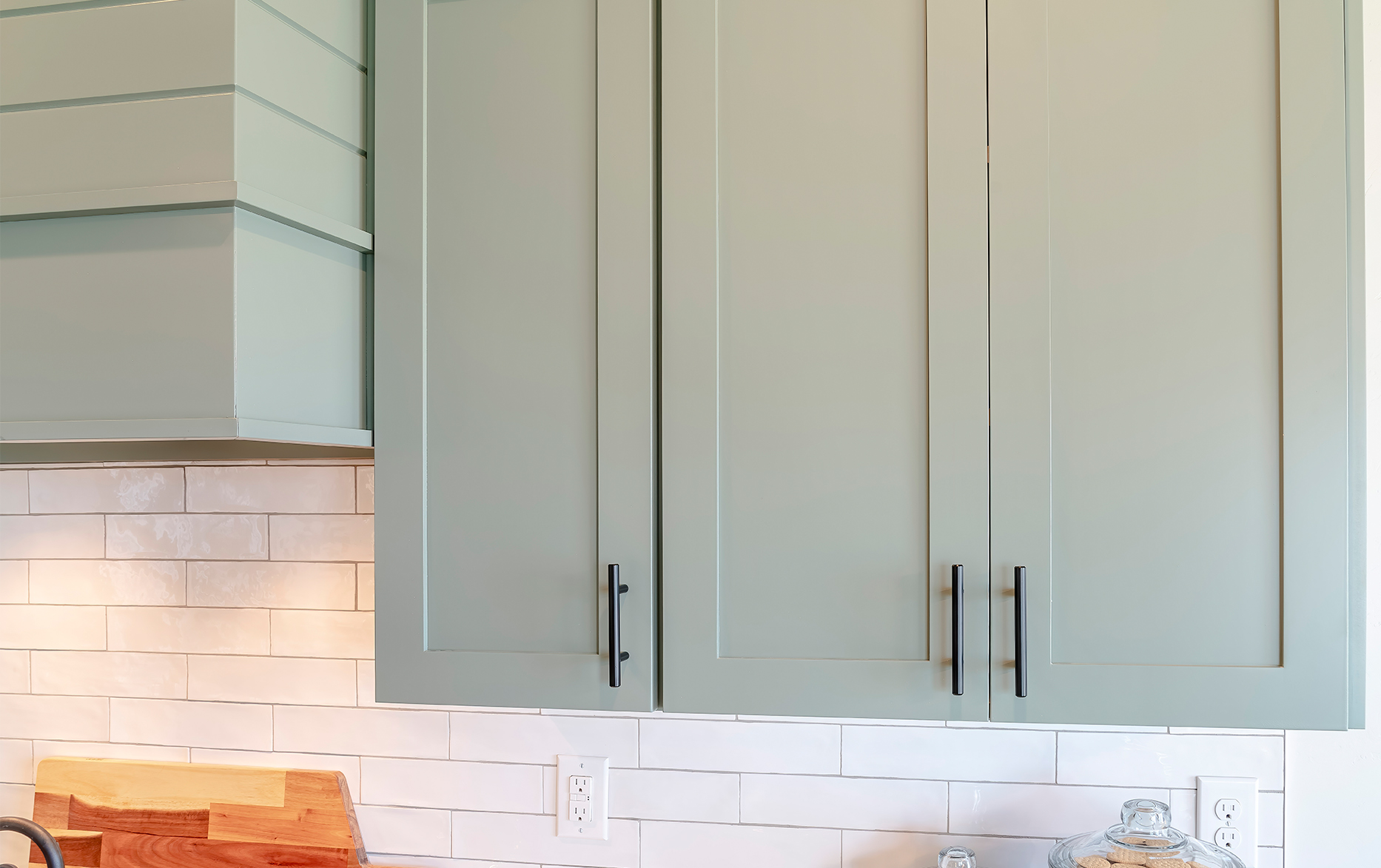

Many kitchen cabinets are made from durable hardwoods with closed grains, like birch, maple or poplar. But every type of wood is vulnerable to potential heat and water damage from the temperature and moisture. If neglected, the condensation and moisture create ideal conditions for mold growth.
Additionally, wood can easily become damaged if you're too rough with your cleaning methods. Skip scouring tools, such as steel wool or wire-bristled brushes, that can leave scratches behind. Avoid abrasive cleaners, acids, and powdered cleansers that can have the same damaging effects.
Popular natural cleaning solutions often include white vinegar or baking soda. At best, vinegar can help in removing soap scum and mineral deposits, which are most likely not a problem on cabinets. Cleaning with a mixture of baking soda and water usually leaves a stubborn white film behind, requiring you to do multiple wipe downs.
Simple Green All-Purpose Cleaner removes grease and grime from cabinet surfaces, while the biodegradable* formula makes it safer for use in the kitchen. The powerful degreaser also wipes away fingerprints and removes stains, leaving behind a streak-free surface.
Although Simple Green is safe enough to use on almost any washable surface, it is not intended for use on unfinished or untreated wood.
Using the directions below, spot-clean any time you notice fingerprints, spatters and other marks, and deep clean at least once a month.
If you're unsure about how Simple Green will affect a surface, be sure to spot test on an inconspicuous area before cleaning.
Tip: Keep heat-producing and steam-producing appliances, like coffee makers, pressure cookers, and toasters, away from your cabinets. Excess heat and moisture emitted by these can damage wood cabinet surfaces.